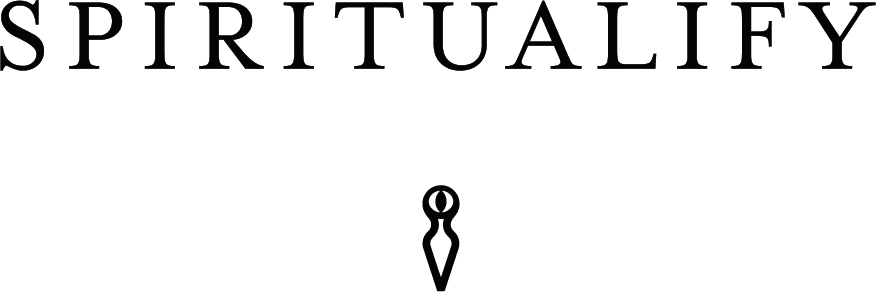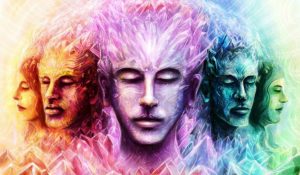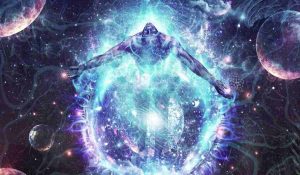In the yoga tradition, we meet a fascinating metaphor: it is said that the milk of a lioness is so powerful that no container can contain it except for pure gold. If the gold vessel has impurities, the milk will eat through the vessel as the acid at these points and will flow out. In the same way, if the practitioner has too much energy leakage, then the spiritual energy (shakti) which is generated by the yogic practice will simply escape again.
Have you ever attended a yoga retreat or a meditation weekend that was so inspiring and stimulating that you were sure your life would change dramatically, only to find out in the days or weeks after you returned home that all that extra juice had run away, making you pretty much the same default state you had before? If so, you are not alone. It is a very common experience. It is due to energy leaks.
Once you know what the main energy leaks are, you can start fixing them. If you manage to plug most of them, you will experience something amazing: the same yogic practices that you have practiced until now seem to generate much more power, energy, prāṇa. In fact, they don’t generate more, you just don’t lose it anymore.
Systematically dealing with these “leaks” radically changes the playing field of spiritual practice. Of course, it can take time to resolve them – but it is time and effort well spent, which pays off its investment more generously than you imagine.
So what are the most common energy leaks? The list below is created by the teacher Śākta-Śaiva Tantrik Dharmabodhi. We offer here owr own short explanation of each major energy leak.
Table of Contents
1. Overtiredness from overdoing and multitasking:
Easily the most common energy drain in today’s society, overdoing means having too full a plate, leaving little time for relaxation, play and the social bonds with which humans have evolved for most of their history. These are not only necessary for health, they create a body-mind container which can hold the energy generated by spiritual practice.
On the other hand, an exhausted body-spirit is riddled with “holes” from which this energy escapes. Your conditioned mind may be convinced that you cannot afford to do less; but really, you can’t afford not to. (And by the way, if you use stimulants [caffeine, etc.] every day, you’re exhausted, even if you don’t feel it.) As Dharmabodhi says,
“Wake up from the dream of overdoing. Take responsibility for your runaway life. Take a close look at the cultural trance of over-doing, expose it and tune into your own energies instead. Follow a simpler and more natural lifestyle, which is actually a more productive lifestyle.”
Oh and by the way, even if you are proud of your ability to multitask, it is now proven that multitasking decreases your efficiency in all tasks (see the work of John Medina).
More importantly, according to yoga tradition, to be healthy and sane, you need to have at least four hours off per day, at least one full day of rest per week, at least one full weekend rest per month and at least three full weeks out of a year. When I say “off”, I don’t just mean not being at the office – I mean not checking emails, not thinking about to-do lists, not doing anything.
Unplanned time, no agenda, unless it is “the agenda” to connect with yourself, your loved ones, nature and/or art. Look at the children who haven’t yet become addicted to bright screens, if you find any: they explore the world around them with wonder, and their creative energy flows in a lively imaginative game.
We are not supposed to lose this. It is part of our natural state. We need this creative energy, this curiosity, this wonder, to feel that life is worth living. You will gradually access it more and more if you create time for a connection without an agenda.
2. The disease of the physical body:
The second energy leak is of course intimately linked to the first. When we do too much, we quite easily develop a disease (or a disease in its own right). When the disease sets in, it attracts our attention and drives away our prāṇa (vitality or vital force).
Disease is different from disability; someone can be disabled or have a chronic condition without feeling diseased. It all depends on how they relate to their disability (for example, how much they focus on it, whether they develop a self-image of it and in what mental setting they see it).
Recommended: 7 Incredible Experiences You Might Live During a Spiritual Awakening.
3. Excessive emotional reactivity:
This is difficult to discuss. As a cognitive neuroscientist recently wrote,
“The ability to regulate the strength of the emotional response is highly adaptive: it prevents us from investing too much energy in certain things.”
Although there is no “too much” emotion in the Tantrik view, it is important to note that certain emotions are generated or amplified by believing in a “story” mentally constructed on a situation. This very common energy leak can be described as a loss of contact with your natural essence, your natural presence, by buying a story associated with a strong emotional response, which often results in a rejection of energy towards someone else(usually the person you blame for your feelings).
When you speak in anger and say things you want to retract later (“I didn’t mean to say that!”), It’s a good example of emotional reactivity. When you sit (or move or dance) with your feelings, don’t own them or deny them, but just being with them as a form of pure energy is the opposite of emotional reactivity.
When your assumptions seem to be incontestable facts and you are filled with pious indignation, it is emotional reactivity. When you are curious about where these intense emotions come from and you can laugh at yourself wondering, it is the opposite.
When you buy right into a disparaging comment from a peer and enter a world of suffering, plagued by repetitive painful thoughts (“How could they?”, “What an asshole!”, “I can’t believe he hates me!” Etc.), it is emotional reactivity. When you keep your heart open and you feel the pain in the other person and in yourself, without buying that person’s story and maybe even seeing the beauty and the opportunity of the pain, it is the opposite.
The opposite of emotional reactivity is therefore in reality only a natural human presence. To remain in this Presence is the goal of the path. Strong emotions can then arise without the emotional reactivity that harms you and you and others. Obviously, emotional reactivity deserves a lot of dedication. It is intimately linked to number 9 below.
4. Losing contact with reality through fantasy:
Those who habitually dwell in the mental world can hardly imagine how much joy and vitality are not available to them. Unfortunately, this is most of the planet. Being lost in vikalpas (fantasy/reverie/mental images) is the main way to separate ourselves from the sweet and the simple respect for our natural state.
Here we are talking about a) imagining possible future scenarios in which you might be happier (fantasy); b) imagine possible future scenarios in which you may suffer (anxiety); c) remembering the “good times” spent through pink glasses and wishing that things could become like this again (daydreaming); and remembering past “mistakes” and think about what you “could have” or “should” have done (regret/guilt). These four are, from a yogic point of view, simply the most common forms of madness.
Humans are just terrible at accurately predicting how they will feel in a given future situation, even when they are convinced otherwise (as Dan Gilbert has proven), and they are also terrible at remembering the past with precision (what you think are precise memories are largely the expression of your individual psychology, much like dreams woven from elements of past experiences).
A fifth version of getting lost in the vikalpas simply focuses on data of all kinds to dampen your existential anxiety or distract you from what you and others feel.
Someone doing a crossword puzzle or playing a difficult video game or reading all the news of the day could pretend that they are more in the present moment, but they are just as “in their head” – and therefore dissociated of fluid presence – just like someone lost in thought about a possible future or memorized past.
Living in mental worlds and imagined realities is a major energy drain for a yogi, and which is present in our society.
Recommended: 7 Deadly Assumptions that Cause Unhappiness and Poison the Spirit.
5. Strongly held beliefs/opinions:
This is closely related to the previous one. It can be hard to believe that this is an energy leak until you feel for yourself the influx of life force that finally comes, admitting deeply the truth that you really don’t know anything for sure.
That almost all of your firmly held beliefs and opinions are either wishful thinking or fearful thoughts. That the world is far, far too complex, and the variables far too numerous, for our little brains to have a fixed opinion on anything (apart from your own inner experience, perhaps).
Note that having beliefs/opinions is not an energy drain; it is adhering closely to these opinions, inflexible and hard in your attitude rather than gentle and open, and being so convinced that you are right and that you know how things are really that actually is an energy leak. There is much more to the reality than what each of us can see.
6. Unclear relationships and boundaries:
Since the whole range of social norms for all kinds of intimate relationships is changing in the 21st century, this one quite important. Of course, when you get to know someone, it is normal that the nature of the relationship is not defined.
However, spending too much time in limbo where you are not exactly sure what the other person wants, needs or feels, but you hope they will come your way of seeing the relationship, is a powerful prāṇa drain.
Conversely, being clear about where you are, but keeping the other person in limbo by not engaging in a specific form of relationship with clear agreements or boundaries is also an energy drain (because using other people are exhausting your shakti).
Obviously, the solution is communication, but few of us know how to communicate our feelings and needs without presenting them in the form of a story about what the other is doing wrong (or what you are doing wrong, for that matter).
That doesn’t help. A clarification dialogue in progress (which is not limited to stinging, pseudo-psychoanalysis or finger-pointing) about what you want and what you agree, and what your lover wants and agrees, is crucial to create the foundation for relationships that are not energy leaks.
Except that sometimes the solution is not communication; sometimes you cling to a relationship that has passed its “expiration date” out of fear or attachment. It’s a huge energy leak. The solution is to let go and walk away.
Recommended: Spiritual Vibration Test: Find out if You have High or Low Vibrations.
7. Unconscious or exessive speech and gossiping:
Another very common energy leak in our society, this is difficult to move away from due to enormous social pressure to conform to the way others around us use language. However, excessive speech is such a drain of energy that, in Āyurveda, it is at the origin of various forms of illness (mainly by exacerbation of the vāta dosha).
Have you ever noticed that the masters of yoga and meditation speak less and carefully? Swāmī Muktānanda once said, “The power of your words increases in direct proportion to the silence you keep.”
Ideally, before opening a topic of conversation, we ask ourselves four questions, the so-called four doors of speech: 1) is this true, this thing I’m going to say? 2) is it necessary or useful to say it? 3) did I find a loving way to say it? 4) is it the right time? (This helps to remember the four key terms: true, necessary, kind, at the right time).
So how do you plug the energy leaks? Suggestions and suggestions have been given above, and these can be supplemented by your own research, your intuitive knowledge and by practicing with a qualified teacher. Specifically, the tradition of Tantrik Yoga has many tools for plugging energy leaks.
There is so much more to say about all these subjects than we have here! Below are the other seven main energy leaks. Based on everything I have received from my teachers for 26 years, I have listed the eight most dangerous traps on the spiritual path, which, when addressed, are also, in my opinion, the eight keys to sustainable awakening. The subject of energy leaks is just one of these eight.
Some others are obvious, such as a distorted understanding of the student-teacher relationship, and some are not as obvious, such as lack of alignment of view, practice, and purpose, or an unclear motive for practice.
Some other energy leaks include:
8. Addictions
9. Other habitual behavior patterns fueled and further fueling the samskāras
10. Poor management of sexual energy
11. Submission to fatalism and the disempowering use of divination tools (for example, relying on astrology, tarot or psychic readings more than on your innate intuitive ability)
12. Incorrect execution of spiritual practices (usually due to incorrect instruction)
13. Becoming “possessed” by the energy and thought patterns of other realms (“kingdom” is a technical term in tantric psychology)
14. Believing that one’s conditioned view of reality is actually the way things are (ajñāna)
Warning:
If you succeed in plugging the energy leaks but you have not learned to dissolve self-images and you have not become aware of the traps described in the teachings of the Six Realms(number 13), then the considerably increased energy and power you have can amplify the tendency and virtuous latent damage.
As Dharmabodhi put it so well: “Without having dissolved the central model of how we see and ‘know’ ourselves to be (our self-story/concept) and how we relate, the power released through the shakti sādhanā will inflate the already existing egoic patterns of thought, feeling and action, often causing harm to the practitioner by deflecting it with obstacles or skills/successes/powers.”







